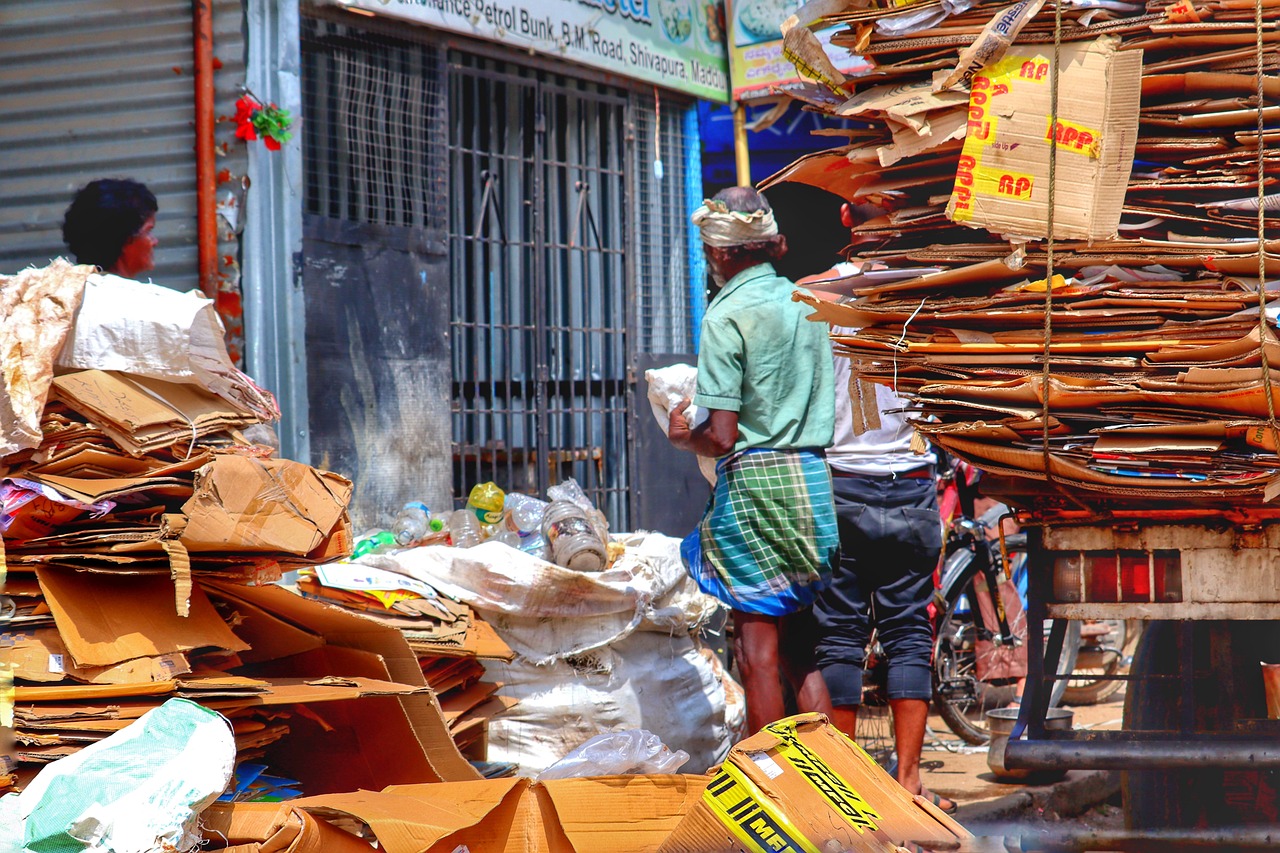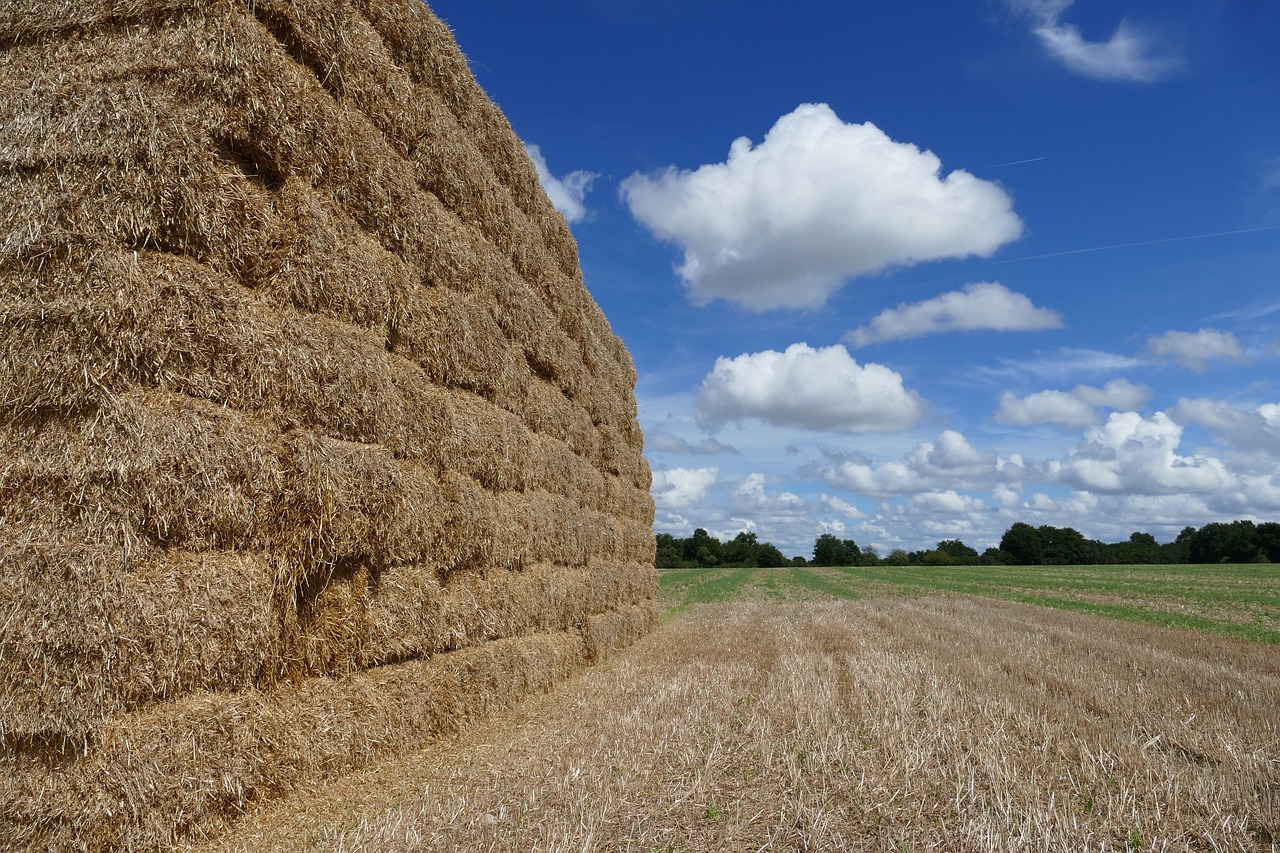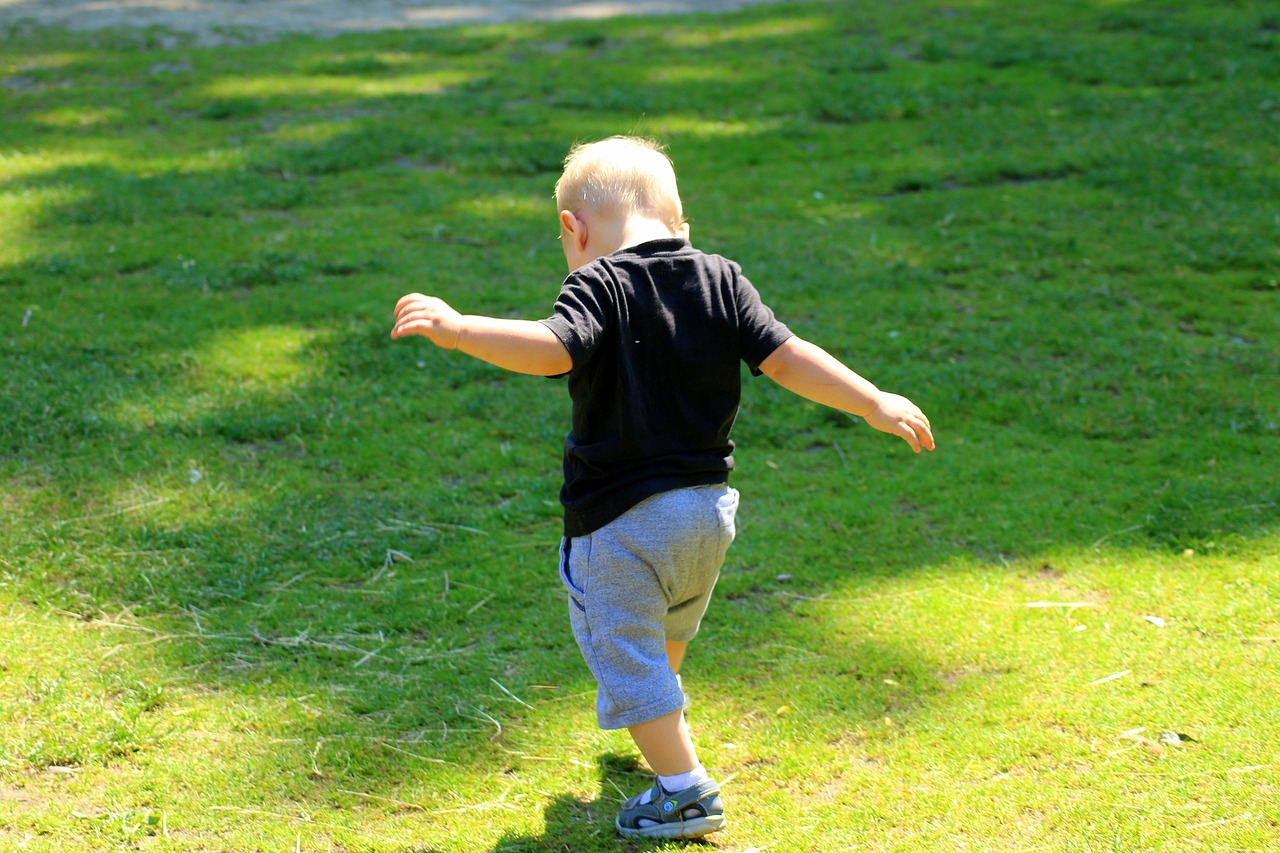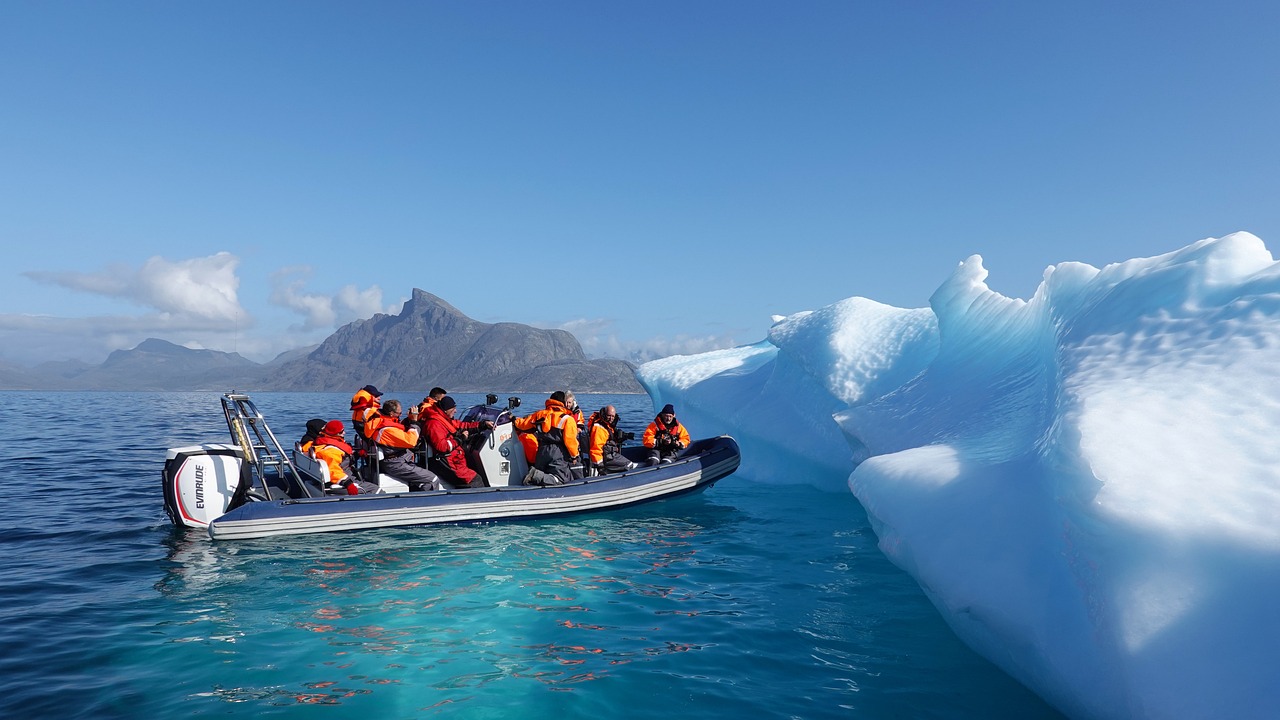How to Stay Safe During Radical Climate Changes?
In a world where climate change is no longer a distant threat but a present reality, staying safe during radical climate changes has become a vital concern for everyone. From scorching heatwaves to catastrophic floods, the impacts of extreme weather events are becoming increasingly frequent and severe. But fear not! There are strategies and tips you can adopt to ensure both your safety and preparedness in the face of these challenges. Think of it as your personal survival guide for navigating the unpredictable climate landscape. Are you ready to take action? Let’s dive in!
Before we can effectively prepare for climate-related emergencies, it’s crucial to understand the risks involved. Climate change brings a variety of threats, including:
- Extreme Weather Events: From hurricanes and tornadoes to droughts and wildfires, these events can cause widespread destruction.
- Rising Sea Levels: Coastal areas face the threat of inundation, which can lead to displacement and loss of property.
- Health Impacts: Increased heat can exacerbate health issues, while flooding can lead to waterborne diseases.
By recognizing these risks, you can start to develop a mindset geared towards safety and resilience. It’s about being proactive rather than reactive. The more you know, the better prepared you’ll be.
Creating an effective emergency preparedness plan tailored to your specific location and potential climate threats is essential. Start by assessing the unique risks in your area. Are you prone to hurricanes, floods, or wildfires? Once you identify these threats, you can tailor your plan accordingly. Consider including the following elements in your emergency plan:
- Evacuation Routes: Know the safest paths to take in case you need to leave your home.
- Meeting Points: Designate a location where your family can regroup if separated.
- Communication Plan: Establish how you will communicate with loved ones during an emergency.
Having a plan not only provides peace of mind but also ensures that you and your family are ready for unexpected situations. It’s like having a roadmap in a stormy sea; it guides you to safety.
One of the most crucial aspects of your preparedness plan is assembling an emergency kit. This kit should contain essential items to help you survive during climate-related emergencies. Here’s a breakdown of what to include:
| Item | Description |
|---|---|
| Food | Non-perishable items such as canned goods, energy bars, and dried fruits. |
| Water | At least one gallon of water per person per day for at least three days. |
| Medical Supplies | First aid kit, prescription medications, and personal hygiene items. |
| Tools | Multi-tool, flashlight, and batteries. |
Having these items on hand can make a world of difference when disaster strikes. Imagine being stuck in a situation without food or water; it’s a nightmare scenario that can be avoided with a bit of preparation.
Understanding the importance of food and water storage strategies is vital. During prolonged emergencies caused by climate change, maintaining your health and well-being relies heavily on having adequate supplies. Consider investing in durable, long-lasting food options and water purification methods. It’s like stocking up your pantry for a long winter; you want to ensure you have enough to last.
In the midst of a climate crisis, injuries and health issues can arise unexpectedly. Having crucial first aid items and medical supplies on hand can ensure you’re prepared to address these challenges. Think about including:
- Bandages and antiseptics
- Pain relievers and allergy medications
- Thermometer and emergency contact information
Being equipped to handle medical emergencies can save lives, including your own.
Effective communication during emergencies is vital. Make sure you have tools and strategies in place to stay informed and connected with loved ones. Consider using:
- Battery-operated radios for updates and alerts
- Text messaging services that work even when phone lines are down
- Social media platforms for real-time information sharing
Staying connected can make all the difference when it comes to safety. It’s like having a lifeline in turbulent waters, guiding you through the chaos.
While personal preparedness is essential, community resilience initiatives play a crucial role in enhancing safety and preparedness against climate change. By working together, communities can share resources and support each other during emergencies. Have you ever noticed how a strong community can weather a storm better than individuals alone? It’s the power of collective action!
Building and joining local support networks can provide vital assistance during climate emergencies. These networks can help coordinate resources, share information, and offer emotional support. Think of it as your neighborhood’s safety net, catching everyone when the unexpected happens.
Advocating for effective climate policies can lead to systemic changes that enhance community safety and resilience. Engaging with local leaders and participating in community discussions can amplify your voice. It’s like planting seeds for a stronger future; the more you nurture them, the better they grow.
In addition to community efforts, there are practical personal safety measures individuals can take to protect themselves and their families from the dangers posed by climate change. Simple improvements around your home can significantly reduce risks from extreme weather events.
Discovering home safety improvements can be a game changer. Fortifying structures, installing storm shutters, and creating an emergency escape plan can enhance personal safety. It’s like putting on armor before heading into battle; you want to be as protected as possible.
Finally, staying updated on climate change developments and safety protocols empowers you to make informed decisions. Knowledge is power, and in the face of radical climate changes, being educated can help you take proactive measures in your daily life.
Q: What should I do if I live in a flood-prone area?
A: If you live in a flood-prone area, it’s essential to have an evacuation plan and an emergency kit ready. Stay informed about weather alerts and consider elevating your home if possible.
Q: How can I contribute to my community’s climate resilience?
A: You can contribute by joining local climate action groups, participating in community preparedness drills, and advocating for sustainable policies.
Q: What are the best ways to stay informed during a climate emergency?
A: Utilize battery-operated radios, follow local news outlets on social media, and sign up for emergency alerts from local authorities.

Understanding Climate Change Risks
Climate change is not just a buzzword; it's a reality that affects us all in profound ways. With the planet's temperature rising, we are witnessing an increase in extreme weather events that can devastate communities and disrupt lives. Think about it: hurricanes, floods, droughts, and wildfires are becoming more frequent and severe. These events are not just minor inconveniences; they pose significant risks to our safety, health, and well-being. The impact of climate change extends beyond just the immediate effects of these disasters; it also includes long-term consequences like rising sea levels and altered ecosystems, which can lead to food and water shortages.
One of the most alarming aspects of climate change is its ability to exacerbate existing health issues. For instance, hotter temperatures can lead to a rise in heat-related illnesses and respiratory problems due to increased air pollution. Vulnerable populations, such as the elderly and those with pre-existing health conditions, are particularly at risk. Furthermore, extreme weather can disrupt healthcare services, making it more challenging for individuals to access necessary medical care during crises. It's essential to recognize these interconnected risks, as they can create a domino effect, leading to further complications in our daily lives.
Moreover, the social and economic impacts of climate change cannot be ignored. Communities that rely heavily on agriculture may find themselves struggling as changing weather patterns affect crop yields. This can lead to food insecurity and increased prices, making it difficult for families to afford basic necessities. In fact, a recent study showed that regions experiencing severe droughts saw a 30% increase in food prices, putting immense pressure on low-income households. The ripple effects of these changes can lead to increased migration, as people are forced to leave their homes in search of better living conditions.
To understand the risks associated with climate change, we can categorize them into three main areas:
- Environmental Risks: These include the loss of biodiversity, changes in wildlife habitats, and the degradation of ecosystems. As temperatures rise, many species struggle to adapt, leading to potential extinction.
- Health Risks: This encompasses a range of issues from heat stress to the spread of infectious diseases. The changing climate can facilitate the spread of diseases like malaria and dengue fever as warmer temperatures expand the habitats of disease-carrying mosquitoes.
- Economic Risks: The financial implications of climate change are vast. From damage to infrastructure during extreme weather events to the costs associated with adapting to new climate realities, the economic burden can be staggering.
As we delve deeper into the risks posed by climate change, it becomes clear that understanding these threats is the first step towards effective action. Awareness enables us to prepare and adapt, whether that means reinforcing our homes against storms, advocating for sustainable policies, or simply making more informed choices in our daily lives. The question is, are we ready to face these challenges head-on? By staying informed and proactive, we can build a safer, more resilient future for ourselves and generations to come.

Emergency Preparedness Plans
Creating an effective emergency preparedness plan is crucial for ensuring the safety and well-being of you and your loved ones during extreme climate changes. The unpredictability of nature can throw us into situations we never anticipated, and having a plan can make all the difference between chaos and calm. Have you ever thought about what you would do if a severe storm hit your area? Or how you would communicate with your family if a sudden evacuation was necessary? These are the types of questions that your emergency plan should answer.
Your plan should begin with a thorough assessment of the risks specific to your location. For instance, if you live in a coastal area, you might need to prepare for hurricanes or flooding, while those in the Midwest might focus on tornadoes or blizzards. Understanding these risks is the first step in crafting a plan that is tailored to your needs. You can create a simple table to visualize the potential threats and the actions you need to take:
| Risk Type | Preparedness Action |
|---|---|
| Flooding | Identify high ground and evacuation routes. |
| Hurricanes | Secure windows and stock up on supplies. |
| Tornadoes | Find a safe room and practice drills. |
| Extreme Heat | Stay hydrated and check on vulnerable neighbors. |
Once you’ve assessed the risks, it’s time to develop a comprehensive plan. This plan should include key elements such as:
- Evacuation Routes: Know multiple ways to leave your area, especially if roads become impassable.
- Meeting Points: Designate safe locations where family members can regroup after an emergency.
- Communication Methods: Establish how you will stay in touch if cell service is disrupted, perhaps using social media or a family group chat.
Additionally, it’s important to conduct regular drills with your family. Just like fire drills at school, practicing your emergency plan ensures that everyone knows what to do when the time comes. It’s not just about memorizing steps; it’s about building confidence and reducing panic. In times of stress, having practiced your response can significantly enhance your ability to act swiftly and effectively.
Don’t forget to review and update your plan regularly. As circumstances change—like new family members, changes in your living situation, or even advancements in technology—your plan should evolve as well. Make it a family tradition to sit down once a year and go over your emergency plan. This way, everyone stays informed and engaged, and it becomes a part of your family culture.
In conclusion, an emergency preparedness plan is not just a document; it’s a lifeline. It empowers you to face climate-related challenges with confidence and ensures that you’re not just reacting to emergencies but proactively managing them. So, take the time to sit down, assess your risks, and create a plan that will keep you and your loved ones safe when the unexpected strikes.
Q1: How often should I review my emergency preparedness plan?
A1: It’s advisable to review your plan at least once a year or whenever there are significant changes in your family or living situation.
Q2: What should I include in my emergency kit?
A2: Your emergency kit should include food, water, first aid supplies, medications, flashlight, batteries, and important documents.
Q3: How can I ensure my family stays connected during an emergency?
A3: Establish multiple communication methods, such as text messaging, social media, and designated meeting points.

Assembling an Emergency Kit
Climate change isn't just a buzzword; it's a reality that brings with it a multitude of risks. From devastating hurricanes and wildfires to rising sea levels that threaten coastal communities, the impacts are profound and far-reaching. Not only do these extreme weather events pose immediate threats to our safety, but they also have long-term implications for human health, food security, and economic stability. As we navigate through this changing landscape, understanding these risks is the first step in ensuring our safety and preparedness.
Creating an effective emergency preparedness plan is crucial for you and your family. Tailor your plan to your specific location and the potential climate threats you might face. This means assessing your surroundings and understanding what types of emergencies are most likely to occur. Whether it’s flooding, tornadoes, or heatwaves, having a plan in place can make all the difference when unexpected situations arise.
When it comes to climate-related emergencies, having an emergency kit can be your lifeline. This kit should be a collection of essential items that can help you survive in the event of a disaster. Think of it as your personal safety toolbox. What should you include? Well, it’s not just about stuffing random items into a bag; it’s about being strategic. Your emergency kit should contain:
- Non-perishable food: Aim for at least a three-day supply. Items like canned goods, energy bars, and dried fruits work well.
- Water: Store at least one gallon of water per person per day for at least three days.
- First aid supplies: Include bandages, antiseptics, and any prescription medications you might need.
- Tools: A multi-tool can be incredibly handy, along with a flashlight and extra batteries.
- Personal documents: Keep copies of important documents, like identification and insurance papers, in a waterproof container.
Remember, the goal of your emergency kit is to keep you self-sufficient for at least 72 hours. But why stop there? Consider customizing your kit based on your family’s specific needs. For instance, if you have young children or pets, make sure to include items that cater to their needs, such as baby formula or pet food.
Let’s dive deeper into the importance of food and water storage strategies. During a climate crisis, access to fresh food and clean water can become scarce. That's why having a reliable stockpile is essential. Choose foods that are easy to prepare and require minimal resources. Think about items that can be eaten straight from the can or require little cooking. Additionally, don’t forget to rotate your supplies regularly to ensure everything is fresh and safe to consume.
Your health is paramount, especially during emergencies. A well-stocked first aid kit can help you address minor injuries and manage chronic health issues that might flare up during a crisis. Include items like adhesive bandages, gauze pads, antiseptic wipes, and any personal medications. Being prepared can alleviate stress and allow you to focus on what truly matters—keeping yourself and your loved ones safe.
Effective communication is vital during emergencies. This section covers tools and strategies to stay informed and connected with loved ones during climate-related events.
Explore community-based initiatives that foster resilience against climate change, emphasizing the importance of collective action and shared resources in enhancing safety and preparedness.
Building and joining local support networks can provide vital assistance and resources during climate emergencies, helping communities recover and adapt to changing conditions.
Learn how advocating for effective climate policies can lead to systemic changes that enhance community safety and resilience in the face of radical climate changes.
This section outlines practical personal safety measures individuals can take to protect themselves and their families from the dangers posed by climate change.
Discover home safety improvements that can mitigate risks from extreme weather events, including fortifying structures and installing early warning systems to enhance personal safety.
Staying updated on climate change developments and safety protocols empowers individuals to make informed decisions and take proactive measures in their daily lives.
1. What should I include in my emergency kit?
Your emergency kit should include non-perishable food, water, first aid supplies, tools, and personal documents. Customize it based on your family’s needs.
2. How often should I check my emergency kit?
You should check your emergency kit at least twice a year to ensure all items are fresh and functional.
3. Where should I store my emergency kit?
Store your emergency kit in a cool, dry place that is easily accessible. Make sure everyone in your family knows where it is.
4. How can I stay informed during a climate emergency?
Use a battery-powered radio, mobile apps, and social media to stay updated on weather conditions and emergency alerts.

Food and Water Supplies
When it comes to surviving during climate-related emergencies, having adequate food and water supplies is crucial. Imagine being caught in a storm or facing a natural disaster without access to these essentials. It's a scary thought, isn't it? That's why it's vital to plan ahead and ensure that you and your family are prepared for such situations. The key here is not just to stock up, but to do so wisely, considering both the quality and the longevity of the supplies you choose.
First and foremost, let's talk about water. The general recommendation is to store at least one gallon of water per person per day for at least three days. This means for a family of four, you'd need a minimum of 12 gallons just for drinking and basic hygiene. But don't stop there! It's wise to have additional water for cooking and cleaning. Here’s a quick breakdown of some effective water storage tips:
- Use BPA-free plastic containers or glass bottles to store water.
- Regularly rotate your water supply every six months to keep it fresh.
- Consider using water purification tablets or filters in case your stored water becomes contaminated.
Now, onto food supplies. The best approach is to focus on non-perishable items that are easy to prepare and provide adequate nutrition. Think about foods that can last for months or even years without spoiling. Here are some great options:
- Canned goods (vegetables, fruits, beans, and meats)
- Dried foods (rice, pasta, and legumes)
- Freeze-dried meals (these are lightweight and have a long shelf life)
- Nut butters and granola bars for quick energy boosts
When stocking your food supplies, consider dietary restrictions and preferences of your family members. A well-rounded emergency food supply should include a mix of carbohydrates, proteins, and fats to keep energy levels stable. Remember to also include a manual can opener if you're relying on canned food!
Lastly, don’t forget about the importance of storage conditions. Keep your food and water supplies in a cool, dry place away from direct sunlight, as heat can degrade the quality of your supplies over time. Regularly check expiration dates and replace items as needed to maintain a fresh stockpile.
In summary, being prepared with sufficient food and water supplies is not just about survival; it’s about ensuring peace of mind for you and your loved ones during unpredictable climate events. By planning ahead and making thoughtful choices, you can turn a potentially chaotic situation into a manageable one. So, are you ready to take the plunge and start preparing your emergency supplies today?
Q: How much water should I store for emergencies?
A: It's recommended to store at least one gallon of water per person per day for at least three days, with additional water for cooking and cleaning.
Q: What types of food should I include in my emergency kit?
A: Focus on non-perishable items like canned goods, dried foods, freeze-dried meals, and snacks that provide balanced nutrition and energy.
Q: How often should I check my emergency supplies?
A: It's a good practice to check your supplies every six months to ensure everything is still fresh and within expiration dates.

First Aid and Medical Supplies
When facing the unpredictable nature of climate change, having a well-stocked first aid kit is not just a good idea; it’s essential for your safety and well-being. Think of your first aid supplies as your lifeline during emergencies—they are like the safety net that catches you when the unexpected happens. Whether it's a minor injury from debris during a storm or a more serious health issue that arises due to extreme weather conditions, being prepared can make all the difference.
So, what should you include in your first aid kit? Here’s a breakdown of crucial items that can help you address a variety of health issues:
| Item | Purpose |
|---|---|
| Adhesive Bandages | For covering small cuts and abrasions to prevent infection. |
| Gauze and Medical Tape | To dress larger wounds and control bleeding. |
| Antiseptic Wipes | For cleaning wounds to reduce the risk of infection. |
| Pain Relievers (e.g., Ibuprofen, Acetaminophen) | To manage pain and reduce fever. |
| Thermometer | To monitor body temperature, especially during illness. |
| Prescription Medications | Any necessary medications you or your family members require. |
| First Aid Manual | A guide to help you respond effectively to injuries and emergencies. |
But it's not just about having the right items; it’s equally important to know how to use them. Consider taking a first aid course to familiarize yourself with basic medical procedures. This knowledge can empower you to act swiftly and confidently when faced with a medical emergency. Imagine being in a situation where every second counts; knowing how to apply a tourniquet or perform CPR could save a life.
Moreover, be mindful of the specific health risks associated with climate change in your area. For instance, if you live in a region prone to flooding, consider including supplies for treating waterborne illnesses. If wildfires are a concern, having items for smoke inhalation treatment could be vital. Tailoring your first aid kit to your environment ensures that you’re not just prepared for any situation but specifically equipped for the challenges posed by climate changes.
Lastly, don’t forget to periodically check your first aid supplies. Just like you wouldn’t drive a car with an empty gas tank, you shouldn’t rely on a first aid kit that’s missing essential items. Regularly reviewing and restocking your supplies ensures that you’re always ready, no matter what Mother Nature throws your way.
Q: How often should I check my first aid kit?
A: It's recommended to check your first aid kit every six months. This way, you can replace expired items and ensure everything is in working order.
Q: Can I use regular household items in place of first aid supplies?
A: While some household items can be useful in emergencies, it's best to stick to medical supplies that are specifically designed for first aid to ensure safety and effectiveness.
Q: Where should I store my first aid kit?
A: Keep your first aid kit in an easily accessible location, such as a kitchen cabinet or a designated emergency drawer, so you can quickly reach it during an emergency.

Communication Strategies
During times of radical climate changes, effective communication can be the lifeline that keeps you connected with your loved ones and informed about the evolving situation. Imagine being in the middle of a storm, where the winds howl and the rain pelts down like a thousand tiny arrows. In such moments, knowing how to reach out and receive crucial updates can make all the difference. So, how can you ensure that you stay in touch and informed?
First and foremost, it's essential to have a reliable communication plan in place. This plan should outline how you and your family will stay connected during emergencies. Consider using multiple communication methods such as:
- Mobile Phones: Ensure everyone has a charged phone and knows how to use messaging apps, which can be more reliable than voice calls during emergencies.
- Landlines: If available, these can be a backup when mobile networks are down.
- Two-Way Radios: These can be invaluable in areas where cell service may be compromised.
Moreover, setting up a designated meeting point can also be a lifesaver. This is especially important if your family members are separated when a crisis occurs. Choose a location that is easily accessible and known to all, such as a local park or a community center. This way, if communication fails, you still have a plan to regroup.
Staying informed is equally crucial. Make sure to subscribe to local weather alerts and emergency notifications. Many communities offer text message alerts that can keep you updated on severe weather warnings or evacuation orders. Additionally, consider following local news outlets on social media for real-time updates. This way, you can receive information as it happens, which is vital when every second counts.
Another useful strategy is to create a contact list that includes not only family members but also friends, neighbors, and local emergency services. This list should be easily accessible, perhaps saved in multiple places, such as a mobile device and a physical copy in your emergency kit. In the chaos of a crisis, having this information at your fingertips can save precious time.
Lastly, don’t underestimate the power of community communication networks. Joining local groups on social media platforms can help you connect with neighbors and share information quickly. These networks can serve as a support system, providing updates and assistance during emergencies. Remember, in times of crisis, we are stronger together.
Q: What should I do if my phone battery dies during an emergency?
A: If your phone battery dies, try to find a power source if it's safe to do so. Additionally, having a portable charger in your emergency kit can be a game changer.
Q: How can I ensure my family members are prepared for emergencies?
A: Regular family meetings to discuss your emergency plan and practice drills can help everyone feel more prepared and confident in their roles during a crisis.
Q: What if I am unable to reach my family during an emergency?
A: If you can't reach your family, head to your designated meeting point. If possible, inform a neighbor or friend of your situation so they can help spread the word.

Community Resilience Initiatives
In the face of radical climate changes, it's not just about individual preparedness; communities must come together to build resilience. Community resilience initiatives play a crucial role in enhancing safety and preparedness against climate-related disasters. These initiatives can range from local support networks to larger advocacy movements that aim to influence policy changes. When communities unite, they create a stronger front against the unpredictable forces of nature.
One of the most effective ways to foster resilience is through collaborative efforts. Local organizations, schools, and even businesses can work together to develop programs that educate residents on climate risks and preparedness strategies. For instance, organizing community workshops can empower individuals with the knowledge they need to respond effectively during emergencies. These workshops can cover a variety of topics, including how to assemble emergency kits, the importance of communication during crises, and strategies for safe evacuation.
Furthermore, establishing local support networks is vital. These networks can provide essential resources and assistance during climate emergencies. Imagine a neighborhood where everyone knows their neighbors and can rely on one another for help. This sense of community can be a lifeline when disaster strikes. Support networks can include:
- Neighborhood watch programs that keep an eye on vulnerable residents.
- Resource-sharing platforms where tools and supplies can be borrowed or exchanged.
- Community gardens that not only promote food security but also foster social ties.
Advocating for policy changes is another critical component of community resilience. Local leaders, activists, and citizens can come together to push for climate policies that prioritize sustainability and preparedness. This can include advocating for improved infrastructure, such as better drainage systems to handle heavy rainfall, or policies that promote renewable energy sources. When communities collectively voice their needs, they can influence decision-makers to implement changes that enhance safety and resilience.
Moreover, it’s essential to engage with local governments and organizations that can provide support. By participating in town hall meetings or community forums, residents can express their concerns about climate change and advocate for necessary resources. This engagement not only empowers individuals but also ensures that their voices are heard in the decision-making process.
Ultimately, building community resilience is about creating a culture of preparedness and support. When individuals feel connected and empowered, they are more likely to take proactive measures to protect themselves and their families. It’s about transforming fear into action, uncertainty into solidarity, and vulnerability into strength. Together, we can navigate the challenges posed by climate change and emerge stronger than ever.
Q: What are community resilience initiatives?
A: Community resilience initiatives are collaborative efforts that aim to prepare and support communities in facing climate change challenges. These can include educational programs, local support networks, and advocacy for policy changes.
Q: How can I get involved in my community's resilience efforts?
A: You can get involved by joining local organizations, attending community meetings, volunteering for events, or starting your own initiatives to educate others about climate preparedness.
Q: What resources are available for communities to enhance resilience?
A: Many resources are available, including grants for community projects, educational materials from environmental organizations, and partnerships with local governments to improve infrastructure.
Q: Why is community resilience important?
A: Community resilience is important because it fosters collaboration and support among residents, allowing them to effectively respond to climate-related disasters and recover more quickly.

Local Support Networks
In times of extreme climate changes, having a strong local support network can be a game changer. Think of it as your safety net, where friends, neighbors, and community members come together to help each other weather the storm—literally and figuratively. When disaster strikes, it’s often not just about individual preparedness; it's about how well we can lean on one another. The connections we build can provide essential resources, emotional support, and a sense of community that can make all the difference.
Building a local support network begins with recognizing the strengths and resources within your community. This could mean organizing neighborhood meetings where people can share their skills, knowledge, and tools. For example, you might have a retired firefighter who can give valuable advice on fire safety or a nurse who can provide first aid training. By pooling these resources, you create a safety net that everyone can rely on.
Moreover, local support networks can facilitate the sharing of information during emergencies. Imagine receiving real-time updates about weather alerts or road closures from a trusted neighbor. This kind of communication is crucial when traditional news sources may be overwhelmed or unavailable. You can establish communication channels through social media groups, community apps, or even a simple phone tree to ensure everyone stays informed.
Another vital aspect of these networks is the potential for collective action. When communities come together, they can advocate for better infrastructure, such as improved drainage systems to combat flooding or community gardens to promote food security. These initiatives not only enhance resilience but also foster a sense of belonging and shared purpose among residents. Remember, a community that works together can respond more effectively to climate challenges.
To further illustrate the importance and potential of local support networks, consider the following table that outlines key elements:
| Element | Description |
|---|---|
| Communication | Establishing reliable channels for sharing information during emergencies. |
| Resource Sharing | Pooling skills, tools, and supplies for collective benefit. |
| Emotional Support | Providing a network for psychological resilience and community bonding. |
| Advocacy | Working together to push for policies and infrastructure improvements. |
In conclusion, the strength of local support networks lies in their ability to create a cohesive community that can face challenges head-on. By fostering these connections, you not only enhance your own safety but also contribute to a resilient community ready to tackle the uncertainties of climate change. So, reach out, connect with your neighbors, and start building that support network today. After all, when the going gets tough, it’s the people around us who can help us stand strong.
- What are local support networks? Local support networks are groups of individuals within a community who come together to share resources, information, and emotional support during emergencies.
- How can I start a local support network? Begin by organizing community meetings, sharing skills and resources, and establishing communication channels to keep everyone informed.
- Why are local support networks important during climate change? They enhance community resilience, provide essential support, and facilitate collective action to address climate challenges.

Advocating for Policy Changes
In the face of radical climate changes, advocating for policy changes is not just a choice; it's a necessity. The power of collective voices can influence governments and organizations to prioritize climate action. But how can you make your voice heard? First, it’s essential to understand that policy changes often begin at the local level. This means engaging with your community, attending town hall meetings, and connecting with local representatives. By doing so, you can raise awareness about climate issues that directly affect your area.
Moreover, you can join or support local environmental organizations that are already working on climate advocacy. These groups often have established networks and resources that can amplify your voice. For example, participating in campaigns or petitions can demonstrate public support for specific policies, making it harder for policymakers to ignore the demands of their constituents. Every signature counts!
Another effective strategy is to leverage social media platforms. Sharing informative content, engaging in discussions, and using hashtags related to climate action can help spread the message far and wide. When you share your personal stories about how climate change has impacted your life, you humanize the issue, making it relatable to others. This can inspire them to join the cause and advocate for change alongside you.
In addition, consider collaborating with schools, universities, and businesses to promote sustainability initiatives. Educational institutions can be powerful allies in advocating for policy changes, as they often have access to young, passionate individuals eager to make a difference. By organizing workshops, seminars, or community clean-up events, you can raise awareness and mobilize support for policies that promote environmental sustainability.
It’s also crucial to stay informed about the current legislative landscape. Knowing what policies are being proposed, debated, or enacted will enable you to provide informed feedback to your representatives. For instance, if a bill is introduced that aims to reduce carbon emissions, you can write letters or emails expressing your support. Remember, lawmakers are more likely to act when they know their constituents care about an issue.
To summarize, advocating for policy changes is a multifaceted approach that requires dedication and collaboration. By engaging with your community, supporting local organizations, utilizing social media, collaborating with educational institutions, and staying informed, you can play an active role in shaping a safer future in the face of climate change.
- What is the best way to start advocating for climate policy changes? Begin by educating yourself about local climate issues and connecting with community organizations focused on environmental advocacy.
- How can social media help in climate advocacy? Social media allows you to reach a wider audience, share information quickly, and engage in discussions that can mobilize support for climate action.
- Why is it important to focus on local policy changes? Local policies directly impact your community, and addressing these issues can lead to immediate changes that benefit the environment and public health.

Personal Safety Measures
When it comes to protecting ourselves and our families from the unpredictable dangers posed by climate change, taking proactive steps is essential. It's not just about waiting for a disaster to strike; it's about being prepared and informed. One of the most effective ways to ensure personal safety is by making informed decisions about our living environments and daily routines. For instance, have you ever thought about how your home could be a fortress against extreme weather? Simple improvements can make a significant difference in your safety.
One of the first steps you can take is to assess your home for vulnerabilities. Are your windows and doors secure? Investing in impact-resistant windows or reinforcing entry points can provide that extra layer of protection against storms. Additionally, consider the landscaping around your home. Trees can be beautiful, but during high winds, they can also become dangerous projectiles. Regularly trimming branches and removing dead trees can help mitigate this risk.
Another crucial aspect of personal safety is staying informed. Knowledge is power, especially when it comes to climate-related events. Consider subscribing to local weather alerts or downloading apps that provide real-time updates on severe weather conditions. This way, you won’t be caught off guard when a storm is brewing. Furthermore, having a communication plan in place with your family can ensure that everyone knows what to do in case of an emergency. For example, designating a safe meeting spot outside your home can be beneficial if evacuation becomes necessary.
In addition to physical safety measures, mental preparedness is equally important. Engaging in community discussions about climate change and safety can help you stay informed about local risks and resources. Joining local groups focused on climate resilience can also provide support and information on best practices for safety. Remember, you’re not alone in this—collective knowledge can empower you and your neighbors to face challenges together.
Moreover, educating yourself and your family about first aid can be a lifesaver, literally. Knowing how to address minor injuries or health issues can make a significant difference during emergencies. Consider taking a first aid course to equip yourself with essential skills. Here’s a quick overview of crucial first aid items you should have at home:
| First Aid Item | Purpose |
|---|---|
| Adhesive Bandages | For minor cuts and scrapes |
| Antiseptic Wipes | To clean wounds |
| Gauze and Tape | For larger wounds |
| Scissors | To cut bandages or clothing |
| CPR Face Shield | For emergency resuscitation |
Finally, consider investing in a reliable emergency kit that includes all the essentials for survival during climate-related emergencies. This kit should contain food, water, medical supplies, and tools. Having these items readily available can make a significant difference in your ability to respond effectively when disaster strikes. It’s like having a safety net that you can rely on when things get tough.
In conclusion, personal safety measures in the face of climate change are not just about reacting to disasters; they are about anticipating risks and taking proactive steps to mitigate them. By fortifying your home, staying informed, engaging with your community, and preparing for emergencies, you can significantly enhance your safety and resilience. Remember, the goal is to create a safe environment where you and your loved ones can thrive, regardless of the challenges posed by our changing climate.
Q1: What are the most important personal safety measures I should take?
A1: The most important measures include securing your home, staying informed about weather conditions, creating a communication plan with your family, and having an emergency kit ready.
Q2: How can I stay updated on climate-related emergencies?
A2: You can stay updated by subscribing to local weather alerts, downloading weather apps, and following news outlets that cover climate issues.
Q3: What should I include in my emergency kit?
A3: Your emergency kit should include food, water, medical supplies, flashlights, batteries, and any necessary tools to help you survive during emergencies.
Q4: Is it necessary to have a first aid kit at home?
A4: Yes, having a first aid kit is essential for addressing minor injuries and health issues that may arise during emergencies.

Home Safety Improvements
This article explores various strategies and tips to ensure safety and preparedness in the face of extreme climate changes, offering insights into personal, community, and global actions.
This section discusses the various risks associated with climate change, including extreme weather events, rising sea levels, and their potential impacts on human health and safety.
Learn how to create effective emergency preparedness plans tailored to your location and potential climate threats, ensuring you and your family are ready for unexpected situations.
Discover essential items to include in your emergency kit, such as food, water, medical supplies, and tools, to help you survive during climate-related emergencies.
Understanding the importance of food and water storage strategies can help you maintain your health and well-being during prolonged emergencies caused by climate change.
Learn about crucial first aid items and medical supplies to have on hand, ensuring you can address injuries and health issues that may arise during climate crises.
Effective communication is vital during emergencies. This section covers tools and strategies to stay informed and connected with loved ones during climate-related events.
Explore community-based initiatives that foster resilience against climate change, emphasizing the importance of collective action and shared resources in enhancing safety and preparedness.
Building and joining local support networks can provide vital assistance and resources during climate emergencies, helping communities recover and adapt to changing conditions.
Learn how advocating for effective climate policies can lead to systemic changes that enhance community safety and resilience in the face of radical climate changes.
This section outlines practical personal safety measures individuals can take to protect themselves and their families from the dangers posed by climate change.
When it comes to safeguarding your home against the unpredictable forces of nature, are absolutely essential. Think of your home as a fortress; it should be fortified against whatever climate-related challenges might come your way. One of the first steps you can take is to evaluate your roofing and siding. Strong winds and heavy rainfall can wreak havoc, so consider installing impact-resistant shingles and reinforced siding. This not only protects your home but can also lower your insurance premiums.
Another crucial improvement involves flood-proofing your home. If you live in a flood-prone area, elevating your home or installing barriers can make a significant difference. Additionally, ensure that your gutters and drainage systems are clear and functioning properly. A well-maintained drainage system can prevent water from pooling around your foundation, which can lead to costly repairs.
Don't overlook the importance of an early warning system. Investing in weather radios or smart home technology can keep you informed about severe weather alerts. This proactive approach allows you to react swiftly, whether it means evacuating or taking shelter. Speaking of shelters, consider designating a safe room in your home. This room should be equipped with essential supplies and sturdy enough to withstand extreme weather events.
To wrap it up, here’s a quick summary of home safety improvements that can help you weather the storm:
| Improvement | Description |
|---|---|
| Roofing | Install impact-resistant shingles to withstand high winds and heavy rain. |
| Flood-proofing | Elevate your home and install barriers to protect against flooding. |
| Early Warning Systems | Utilize weather radios or smart technology to stay updated on severe weather alerts. |
| Safe Room | Designate a sturdy room equipped with emergency supplies for extreme weather situations. |
By implementing these home safety improvements, you not only enhance your personal safety but also contribute to the resilience of your community. It’s about taking those small, actionable steps that can lead to significant changes in how we face the challenges posed by radical climate changes.
- What are the most important home safety improvements for climate change? Focus on roofing, flood-proofing, early warning systems, and establishing a safe room.
- How can I prepare my family for climate-related emergencies? Create an emergency preparedness plan and assemble an emergency kit with essential supplies.
- Why is community resilience important during climate changes? Collective action and shared resources can significantly enhance safety and preparedness at a community level.

Staying Informed and Educated
This article explores various strategies and tips to ensure safety and preparedness in the face of extreme climate changes, offering insights into personal, community, and global actions.
This section discusses the various risks associated with climate change, including extreme weather events, rising sea levels, and their potential impacts on human health and safety.
Learn how to create effective emergency preparedness plans tailored to your location and potential climate threats, ensuring you and your family are ready for unexpected situations.
Discover essential items to include in your emergency kit, such as food, water, medical supplies, and tools, to help you survive during climate-related emergencies.
Understanding the importance of food and water storage strategies can help you maintain your health and well-being during prolonged emergencies caused by climate change.
Learn about crucial first aid items and medical supplies to have on hand, ensuring you can address injuries and health issues that may arise during climate crises.
Effective communication is vital during emergencies. This section covers tools and strategies to stay informed and connected with loved ones during climate-related events.
Explore community-based initiatives that foster resilience against climate change, emphasizing the importance of collective action and shared resources in enhancing safety and preparedness.
Building and joining local support networks can provide vital assistance and resources during climate emergencies, helping communities recover and adapt to changing conditions.
Learn how advocating for effective climate policies can lead to systemic changes that enhance community safety and resilience in the face of radical climate changes.
This section outlines practical personal safety measures individuals can take to protect themselves and their families from the dangers posed by climate change.
Discover home safety improvements that can mitigate risks from extreme weather events, including fortifying structures and installing early warning systems to enhance personal safety.
In today's rapidly evolving world, staying informed about climate change is not just beneficial; it's essential. Knowledge is your best defense against the unpredictable nature of climate-related disasters. By keeping yourself updated on the latest climate science, weather forecasts, and safety protocols, you can make informed decisions that protect you and your loved ones.
One effective way to stay informed is through reliable news sources, scientific journals, and educational websites. Consider subscribing to newsletters from organizations dedicated to climate research, such as the Intergovernmental Panel on Climate Change (IPCC) or the NASA Earth Science Division. These platforms provide valuable insights and updates on climate trends and emerging risks.
Moreover, engaging in community workshops and seminars can enhance your understanding of local climate issues. These gatherings not only offer knowledge but also foster connections with like-minded individuals who share your commitment to climate awareness. You can also participate in online forums and social media groups focused on climate change, where you can exchange ideas and learn from others' experiences.
To make the most of your learning journey, consider the following strategies:
- Set aside time each week to read articles or watch documentaries about climate change.
- Follow experts on social media platforms to get real-time updates.
- Join local environmental groups to participate in discussions and initiatives.
Lastly, don't underestimate the power of educating others. Share what you learn with friends and family. By discussing climate change and its implications, you contribute to a more informed community, which is crucial for collective action. Remember, knowledge is contagious, and the more people who understand the risks, the better prepared we all become.
Climate change poses several risks, including extreme weather events like hurricanes and floods, rising sea levels, and increased health issues due to heatwaves and pollution.
Creating an emergency preparedness plan, assembling an emergency kit, and staying informed about local climate risks are essential steps in preparing your family for potential emergencies.
Your emergency kit should contain food, water, first aid supplies, flashlights, batteries, and any necessary medications. It's vital to tailor your kit to your family's specific needs.
Communities can build resilience by creating local support networks, advocating for policy changes, and engaging in community-based initiatives that focus on sustainability and preparedness.
Frequently Asked Questions
- What are the main risks associated with climate change?
Climate change poses several risks, including extreme weather events like hurricanes and floods, rising sea levels that threaten coastal communities, and health issues arising from heatwaves and poor air quality. It's essential to be aware of these risks to take appropriate safety measures.
- How can I create an effective emergency preparedness plan?
An effective emergency preparedness plan should be tailored to your specific location and the climate threats you might face. Start by assessing your risks, then outline clear steps for evacuation, communication, and shelter. Regularly review and practice your plan with your family to ensure everyone knows what to do in an emergency.
- What items should I include in my emergency kit?
Your emergency kit should include essential items such as non-perishable food, clean drinking water, a first aid kit, flashlights, batteries, and any necessary medications. Don't forget tools like a multi-tool and a whistle, which can be lifesavers in critical situations.
- How can I ensure my food and water supplies are adequate?
To maintain adequate food and water supplies, store enough non-perishable items to last at least 72 hours for each family member. Consider rotating your supplies regularly and keeping a supply of clean water or water purification methods on hand to ensure safety during emergencies.
- What are some effective communication strategies during emergencies?
Effective communication during emergencies involves having multiple ways to stay informed, such as weather apps, radios, and community alerts. Establish a communication plan with your family, including designated meeting places if you get separated, to ensure everyone stays connected.
- How can I contribute to community resilience against climate change?
You can contribute to community resilience by participating in local initiatives, joining support networks, and advocating for sustainable policies. Engaging with your community not only enhances safety but also fosters a sense of solidarity and shared purpose in addressing climate challenges.
- What personal safety measures can I take at home?
To improve personal safety at home, consider fortifying your property against extreme weather, such as reinforcing windows and doors. Installing early warning systems and having a clear evacuation route can also significantly enhance your safety during climate-related emergencies.
- How can I stay informed about climate change and safety protocols?
Staying informed involves regularly checking reliable news sources, following climate organizations on social media, and attending community meetings focused on climate issues. Educating yourself empowers you to make informed decisions and take proactive measures to protect yourself and your family.



















